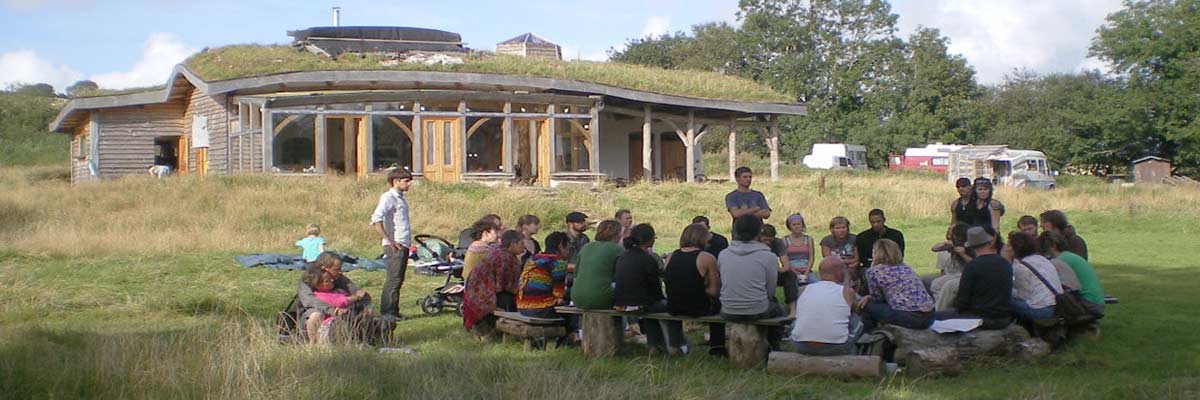World’s Largest Wind Turbine To Float Off Norway
We’ve seen mega-turbines before — but never one with an output of 10MW, and certainly not one that floats!
When completed, the world’s largest turbine will stand at roughly 533 feet with a rotor diameter of 475 feet. At three times more powerful than current turbines, it will be able to power over 2,000 homes. From Treehugger,
It will be built by the Norwegian company Sway and tested first on land in Oeygarden, southwestern Norway. Unlike most offshore wind projects where turbines rest on the seafloor, Sway turbines float. This means further offshore development where winds are stronger and more consistent.
The floating tower is a pole filled with ballast beneath the water creating low center of gravity. Anchored to the seabed with a single pipe and a suction anchor, it can tilt 5-8°, and turn around with the wind.
It’s expected that the prototype will cost close to $70 million and be completed sometime in 2011.
If Darth Vader Built A Treehouse, It Would Looks Something Like This
A lot of people are comparing this beautiful treehouse in Portland, Oregon to a hobbit dwelling. Personally, add a little black paint and it looks like something Darth Vader would retreat to when things get a little to hectic on the Death Star. It also looks like it would double as a swanky TIE fighter. From the architect,
Located on a flag lot, a steep sloping grade provided the opportunity to bring the main level of the house into the tree canopy to evoke the feeling of being in a tree house. A lover of music, the client wanted a house that not only became part of the natural landscape but also addressed the flow of music. This house evades the mechanics of the camera; it is difficult to capture the way the interior space flows seamlessly through to the exterior. One must actually stroll through the house to grasp its complexities and its connection to the exterior. One example is a natural wood ceiling, floating on curved laminated wood beams, passing through a generous glass wall which wraps around the main living room.
Biosphere 2, Meet the Second Law of Thermodynamics
My graduate school advisor, Charles Hall, is a very intelligent man, though he frequently defers to his doctoral advisor’s talent and knowledge. Howard Odum explained the first and second laws of thermodynamics concisely and in a manner easy to understand:
The quantity of energy within a system is maintained (first law). However, the quality of that energy degrades over time (second law).
Entropy is defined as
a function of thermodynamic variables, as temperature, pressure, or composition, that is a measure of the energy that is not available for work during a thermodynamic process. A closed system evolves toward a state of maximum entropy.
Up is Down. Black is White. Night is Day. GM’s Lutz Advocates for Increased Gas Tax
From CNNMoney.com:
Lutz was asked if that means he would favor higher gasoline taxes, as in Europe where taxes drive fuel to more than $5 a gallon. He said he couldn’t speak for GM, but he said he saw a lot of value in a steady tax rise to much higher levels.
“You either continue with inexpensive motor fuels and have to find other ways to incent the customer to buy hybrids and electric vehicles, such as the government credits,” he said. “Or the other alternative is a gradual increase in the federal fuel tax of 25 cents a year, which in my estimation would have the benefit of giving automobile companies a planning base, and giving families that own vehicles a planning base.”
Lutz continued, noting that if families knew that the price of gasoline were going to steadily increase over the next few years, they would change their buying habits and lean towards more fuel efficient vehicles.
Renewable Energy Company Creating The Biggest Green Party You’ve Ever Seen
We love raucous festivals like Burning Man and music jamborees like Bonaroo, but we’ve never heard of one that combines the spirit of these events with the mission to actually accomplish something. Like building a build a micro wind turbine farm.
Such is the idea behind “Villages in the Sky: DIY World Change” — a a family-friendly renewable energy and sustainability celebration located in the Ozarks and scheduled for June 2010. Unlike gatherings that strive to leave things the way they were before anyone arrived, Villages in the Sky is looking to take advantage of crowd sourcing to create a better place than existed before. Participants will help build a micro wind turbine farm and bio-mass systems as well as giant play structures (zip lines, tree houses, ropes courses, etc). The entire event is internally cash free event which promotes a volunteer ethic and strangers working cooperatively for a shared goal. In fact, the main goal is to leave behind the beginnings of a locally self sufficient eco-village. Perhaps even one inspired by the Ewoks. From the website,
Spyware Disguised As Eco Antivirus Tricking Users
Environmentally-conscious PC owners beware! There’s a fairly recent spyware virus out there that takes advantage of the green movement to promote an entirely different agenda.
Called “Eco Antivirus”, the app poses as green security software — offering to help conserve the energy your computer consumes while searching for malicious bugs. Unfortunately, the app is a malicious program itself that “bombards the screen with a series of fake security warnings, deceiving scans and aggressive marketing designed to persuade the user to visit the Eco AntiVirus website to purchase the malicious software.”
While those infected have reported it being something of a nightmare to remove the spyware, there are now legit apps to handle this wolf in sheep’s clothing.
Lesson here? Don’t download suspicious software without first doing a bit of googling to pull back the curtain on any BS green claims. Even software can greenwash.
Buying An Electric Car? You Might Want To Order Your Charging Station Now
2010 will most likely go down as the year electric cars were (once again) made available to the public through Big Auto. Both Nissan and Chevy have plans to release the Leaf and Volt respectively — and both focus on getting energy from being plugged in. (Although the Volt can charge its battery utilizing its small “range-extender engine”, but then what’s the point of having an electric car?)
If you’ve got the deep pockets for one, the most conventional way of charging the vehicle will be to simply plug it into an ordinary wall socket. Charging a Nissan Leaf would take up to 16 hours, and charging a Volt would take eight. If you’re in a hurry, however, the best thing to have on-hand in the garage is a “quick charger” — which pushes a much more considerable amount of juice to your car. Instead of 8 hours, you can now have a fully charged Volt in under 2.5 hours.
Unfortunately, having a quick charger installed in your garage is not something just anyone can do.
Why Security Fencing is Classed as Environmentally Friendly
Security fencing is an essential part of everyday life in most western countries these days. It does a great job of keeping intruders out of certain secure areas while protecting those within, but is it environmentally friendly? Fencing of all kinds is there for a good reason and sometimes this is to protect our unique flora and fauna from harm.
Consider these reasons why such fencing is environmentally friendly:
- If such a fence is not there, plants and animals can be injured or killed from being driven over, or walked on. This may not necessarily be done on purpose, but the result is the same; the destruction of habitat and thus, of the species that need it for their survival. So it can be said that such a fence is environmentally friendly.
- Such fencing is usually made from wire, steel or galvanise iron, or a combination of all these materials. In many cases there may be concrete posts or footings as well. All these materials are durable and long-lasting, requiring little maintenance over the years, another tick for being friendly to the environment.
- There are many different kinds of fencing and what is used depends on the purpose of the fence. Commercial fencing can be made to look visually appealing by the use of such elements as limestone blocks, but in most cases a fence looks neat and tidy anyway, as it separates one area from another and defines space.
- It can be used to ensure foot or vehicular traffic causes the least amount of harm to the environment and can keep many different types of native or farm animals and pets separated from each other and thus, free from harm.
- Security fencing is also used to keep our precious children safe from wandering away and from other dangers, so it does many essential jobs well.
- Many types of fencing can be recycled by being dismantled and used in another location when necessary, so that too, makes it environmentally friendly. Steel and iron can also be melted down and re-formed into something else, making those kinds of fences highly recyclable.
Crazy Treehouse Could Probably House A Small Village
When you were a kid, did you ever dream up the goal of one day building the largest treehouse ever? For Horrace Burgess in Tennessee, that dream became a reality with this gargantuan structure that features 11 floors and more than 8,000 sq.ft. of real estate. From ZuZuTop,
The greatness of Horrace Burgess treehouse is not subject to the tree on which it is based alone though. As it turns out, while the tree in question does contribute something to the height of the treehouse, the owner’s efforts also go a long way towards this greatness possible. The tree’s contribution to the 97 foot edifice is only 80 feet, so that the other 17 feet on top of the basic 80 foot are from Horrace’s sheer effort. To be sure, we can’t begrudge the base tree of a claim to greatness too: a tree towering at 80 feet in height and with a diameter of over 12 feet is a real wonder.
Incredibly enough, Burgess isn’t done yet. This whole project, which he estimates to have cost north of $12,000, is still a work in progress. Tower of Babylon anyone?
The Bike Hearse: Your Green Trip To The Afterlife
How’s this for a unique and eco-friendly way to get from the funeral home to your final resting place? Wade Lind, owner of Sunset Hills Cemetery in Eugene, Oregon came up with the “bike hearst” as an option for those really looking to limit their impact once they’ve passed on. Let’s hope there aren’t many hills along the way.
















